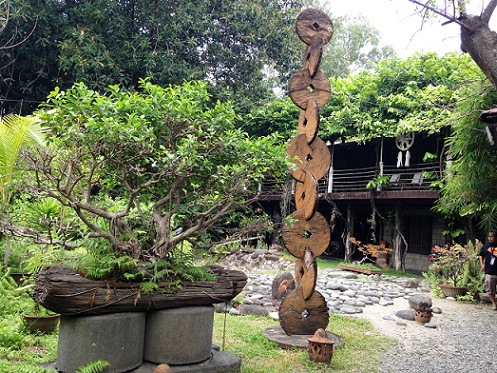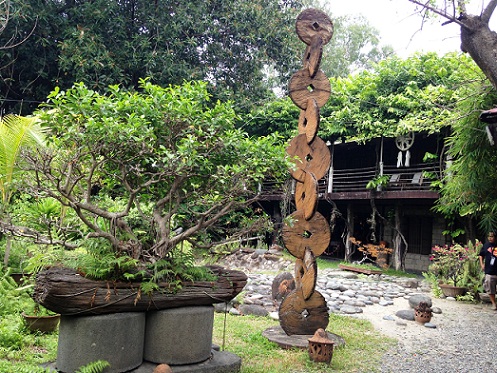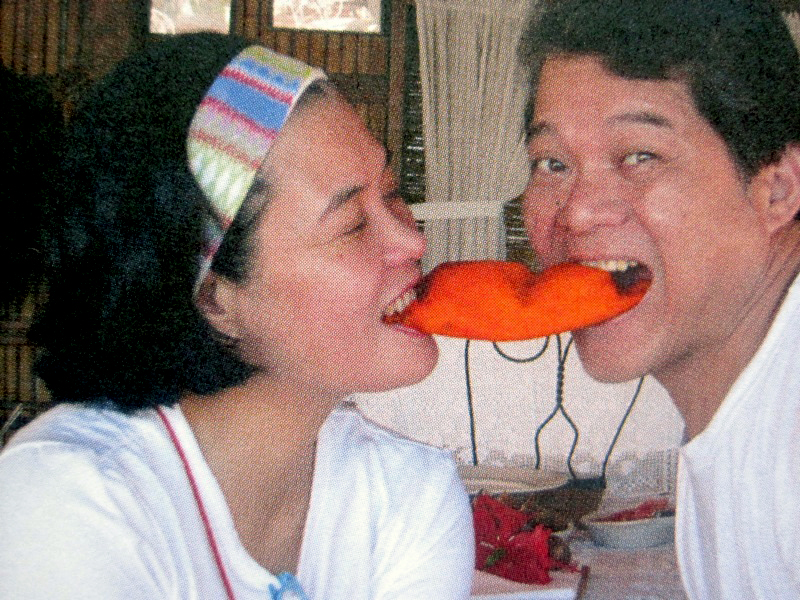By NORMAN SISON
Photos by CARLA SISON
IF you’re traveling 90 kilometers just for lunch, there’s only one thing that should occupy your mind especially if you’re on an empty stomach: the food had better be really good to make it worth your time.
That’s aside from the one-hour drive going there and back, for it’s more than just a lunch — it’s a three-hour food fiesta. Which brings up another concern: how much can one gulp down in three hours without bursting or suffocating to death?
Unlike most restaurants, going to Bale Dutung in Angeles City, Pampanga province, requires one bit of preparation. Thou shalt wear pants or skirts that can be loosened. Seriously.
A group of 14 foodies arrives at noon, right on time. After a welcome drink of water to drive away the summer heat, a receptionist asks: “Would you like to begin now?”
It all starts to sink in. No, this isn’t a lunch. It’s a multi-course obstacle course. Lian Chua, who organized the food trip, is in thought: Why will it take that long and will she make it to the end of menu. She’s also worried that her friends might not like the food and she’ll be blamed because she put the contingent together.
An adventurous soul, Chua learned about Bale Dutung in 2008 after seeing an episode of cable TV show “Anthony Bourdain: No Reservations” on the Travel Channel that chronicled the American chef and travel show host’s visit to the Philippines. Bourdain is now on the CNN travel show “Anthony Bourdain: Parts Unknown”.
 Tucked in a private subdivision, Bale Dutung (“wooden house” in Pampangueño) stands out among its regular-looking neighbors. The large house, mostly of — what else — wood, is on concrete stilts.
Tucked in a private subdivision, Bale Dutung (“wooden house” in Pampangueño) stands out among its regular-looking neighbors. The large house, mostly of — what else — wood, is on concrete stilts.
The living quarters are on the second floor, reminiscent of Spanish colonial era Filipino houses. The main dining area is on the ground floor — or rather under the house — known locally as the silong.
There are three menus to choose from, and the foodie group chose — several days before when they placed their reservations online (www.baledutung.com) — a Kapampangan menu, consisting of a 10-plate list of Pampagueño dishes from appetizer to dessert.
All the dishes are creations of chef, sculptor and writer Claude Tayag, who, with his writer wife Mary Ann Quioc, put up Bale Dutung. Tayag entertains another group of diners at the next table while his wife plays host to Chua’s foodie group.
As the dishes are served one by one — more like paraded — the diners realize that eating for three hours at Bale Dutung is just right. It’s not a lunch. It’s an adventure.
Unlike the usual concept of lunches with full plates, the servings there are small but not tiny. Just enough for the taste buds to savor, for the feel-good receptors in the brain to fire up, while leaving room in the tummy for the courses ahead.
None of 14 foodies in the group are from Pampanga, so it’s all a learning experience. Some of the dishes are new. Some are familiar, with tweaks here and there.
Quioc gives them fine tidbits of trivia, how one dish differs from one region to another simply because Filipinos are a babel of cultures made up of eight languages and over 70 dialects, spread out over 7,107 islands. It’s a quirk that takes time to digest.
Not to mention the Chinese, Spanish, Mexican, American and other influences thrown into the mix over the course of the nation’s history as a result simply of the country’s geographical location.
“Our aim is that people will understand and appreciate Filipino food,” says Quioc. “Here at Bale Dutung we get many foreigners, and we want them to go home knowing what Filipino food is.” From the Pampangueño dining point of view, at least.
Bourdain and other foreign adventurous diners have wondered why Filipino cuisine is underrepresented on the world’s restaurant tables. “It’s an asset that you have a wide variety and different influences from your years of colonization,” Bourdain told Tayag in 2008.
“Think of how many Filipinos there are across the world: millions and millions. There must be around 150,000 in London alone. That’s larger than any Thai, Japanese or Korean community,” wrote gourmand Tom Parker Bowles for the August 2011 edition of Esquire after a visit to the Philippines. “And how many restaurants? You can count them on one hand. It’s the great hidden cuisine.”
Chua, who hails from Bataan province, likes variety in a cuisine but also sees a downside. “Our original Filipino food is too diverse that even Filipinos are not aware of them unless you get to taste them. I myself find it difficult to identify which are original Filipino food and which are not. That is why when I travel to the provinces I always look for local restaurants that offer the specialty of the place.”
For that, Tayag co-authored with his wife a 306-page guide, Linamnam: Eating One’s Way Around the Philippines.
“There is no standard Filipino food,” says Quioc, adding that it is best to celebrate culinary diversity. Try asking Filipinos, especially when they are in groups, how adobo should be made.”
No argument there from Chua and her foodie buddies as they depart for Manila with full stomachs — hungry for more.


